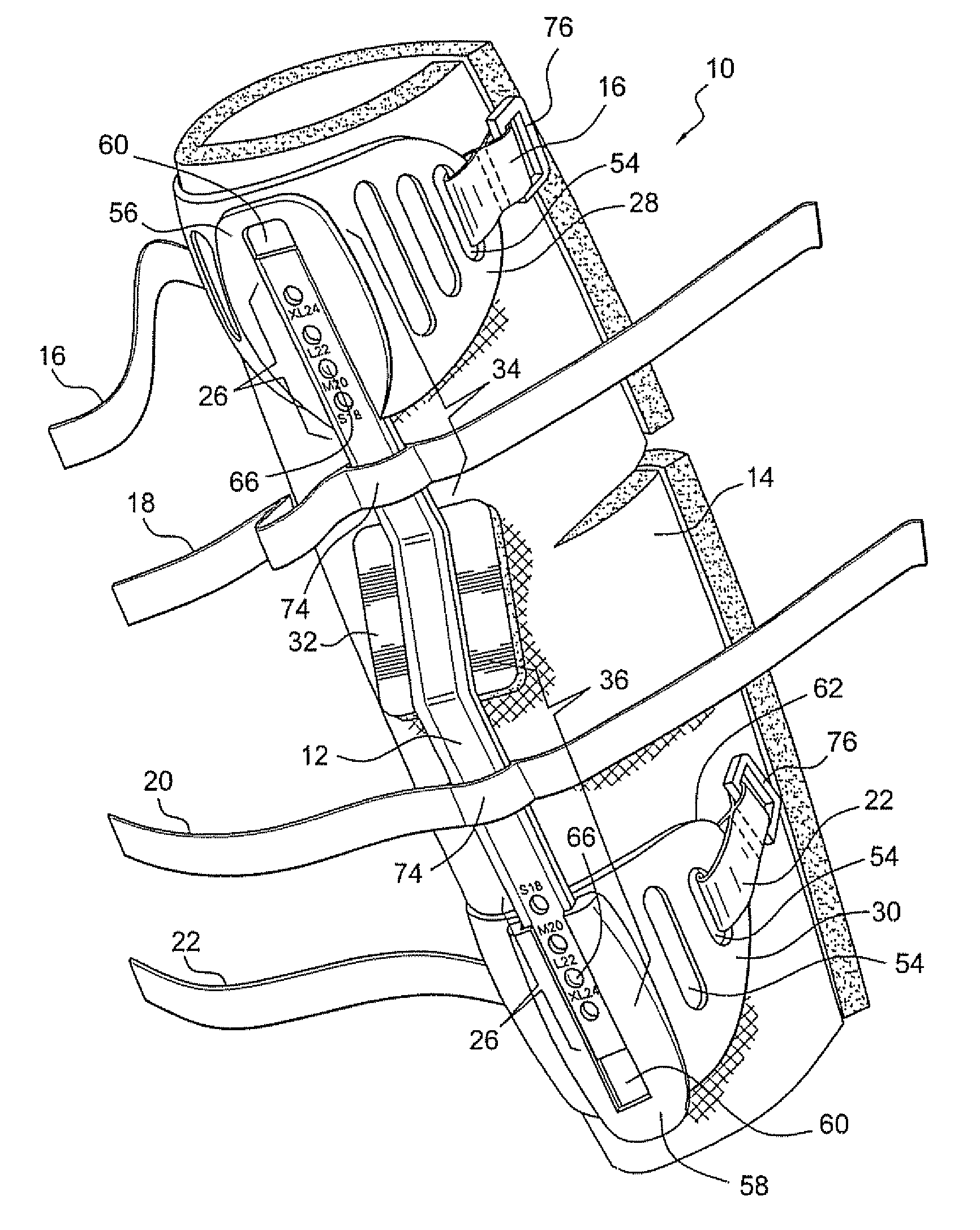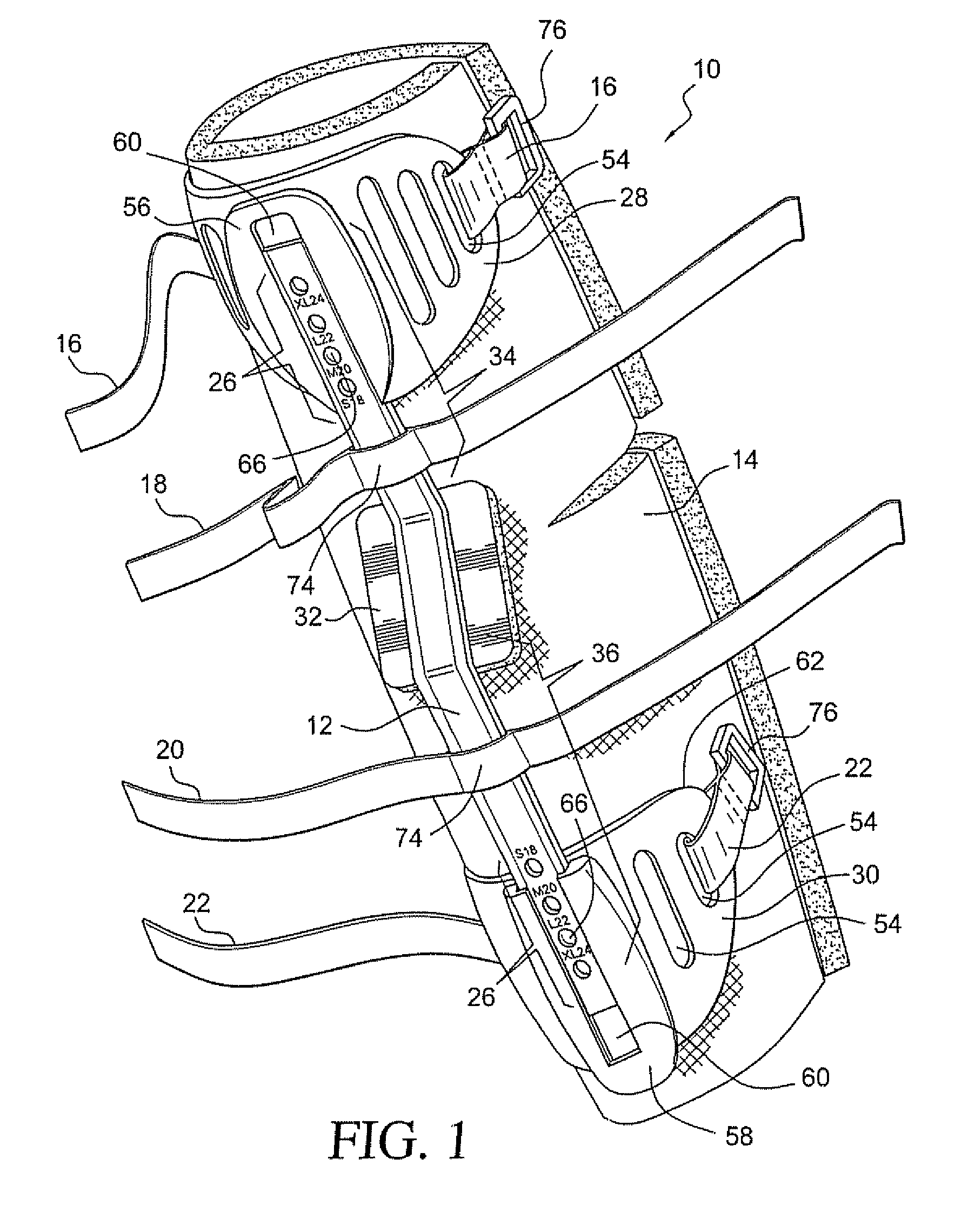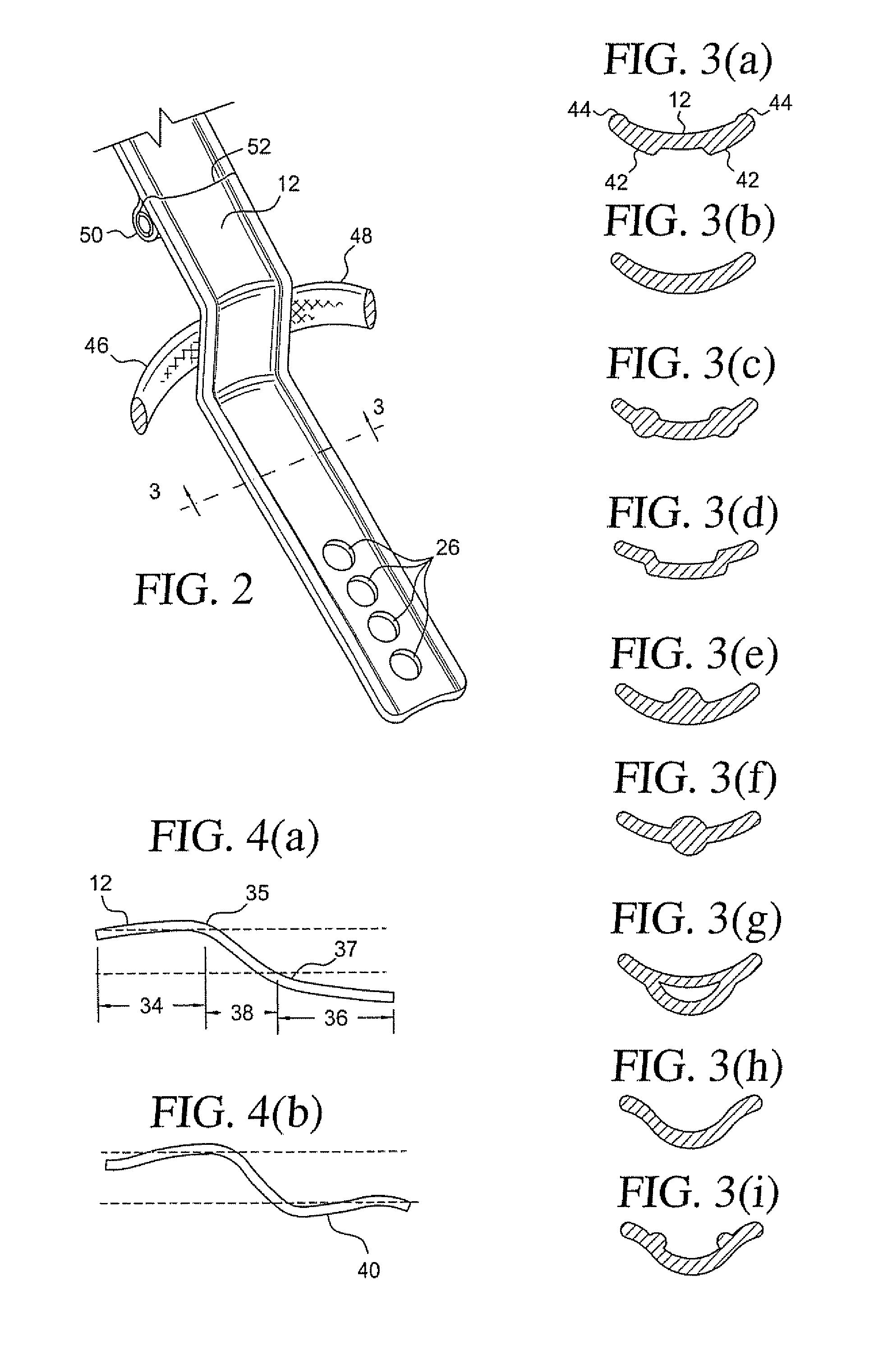Knee immobilizer
a knee and immobilizer technology, applied in the field of orthopaedic braces, can solve the problems of levee being bent backwards, increasing rotation, damage or tear of supporting ligaments, etc., and achieves the effects of reducing the pistoning of the brace, enhancing the strength of the popliteal region, and increasing the support level
- Summary
- Abstract
- Description
- Claims
- Application Information
AI Technical Summary
Benefits of technology
Problems solved by technology
Method used
Image
Examples
Embodiment Construction
[0025]The present invention is directed to an orthopedic brace for support of an injured limb. In the preferred embodiment, the present invention is directed to a knee immobilizer. As seen in the perspective view of FIG. 1, the knee immobilizer or brace 10 is preferably constructed of a rigid support structure 12 acting as a spine and incorporates an optional foam compressive liner 14 and a strapping system consisting of four straps 16, 18, 20, 22. As seen in FIG. 9, the knee immobilizer or brace 10 is shown in normal use. It is attached to the posterior portion of a patient's leg 24.
[0026]In FIG. 1, at the top and bottom ends of the stay member 12 are the femoral and tibial cuffs 28, 30, respectively. The cuffs 28, 30 slide along the femoral and tibial portions 34, 36 of the stay member 12 for quick adjustment of its overall length. An optional popliteal pad 32 is attached to the stay member 12 to further provide support and protect the very sensitive popliteus area of the knee. Th...
PUM
 Login to View More
Login to View More Abstract
Description
Claims
Application Information
 Login to View More
Login to View More - R&D
- Intellectual Property
- Life Sciences
- Materials
- Tech Scout
- Unparalleled Data Quality
- Higher Quality Content
- 60% Fewer Hallucinations
Browse by: Latest US Patents, China's latest patents, Technical Efficacy Thesaurus, Application Domain, Technology Topic, Popular Technical Reports.
© 2025 PatSnap. All rights reserved.Legal|Privacy policy|Modern Slavery Act Transparency Statement|Sitemap|About US| Contact US: help@patsnap.com



